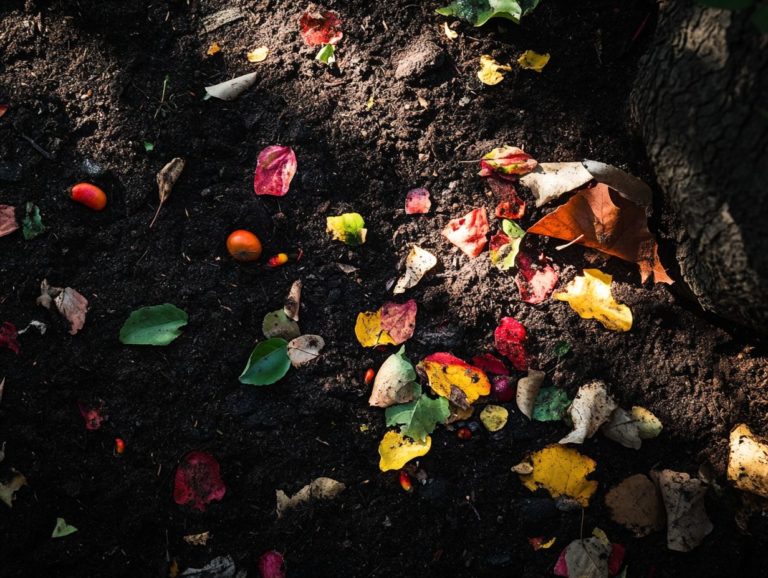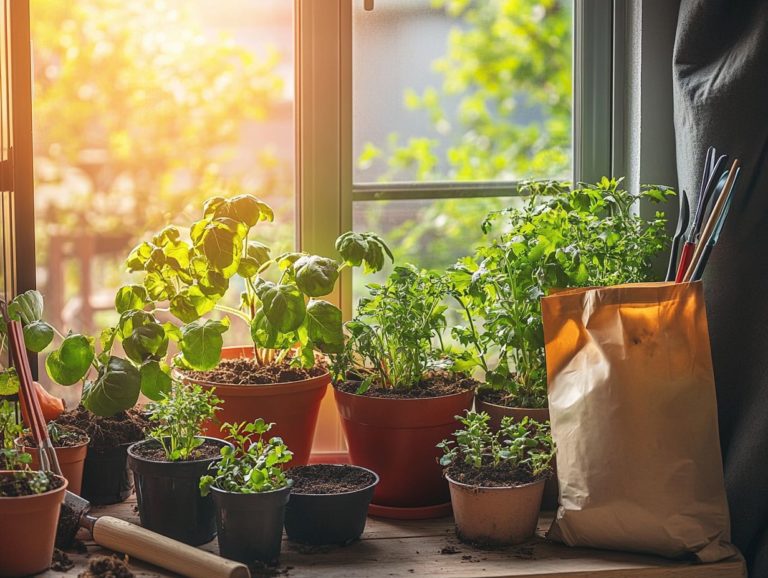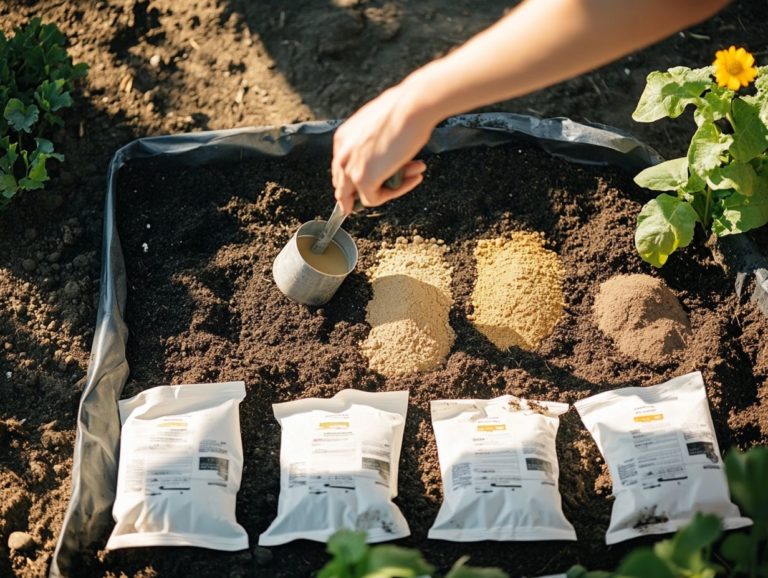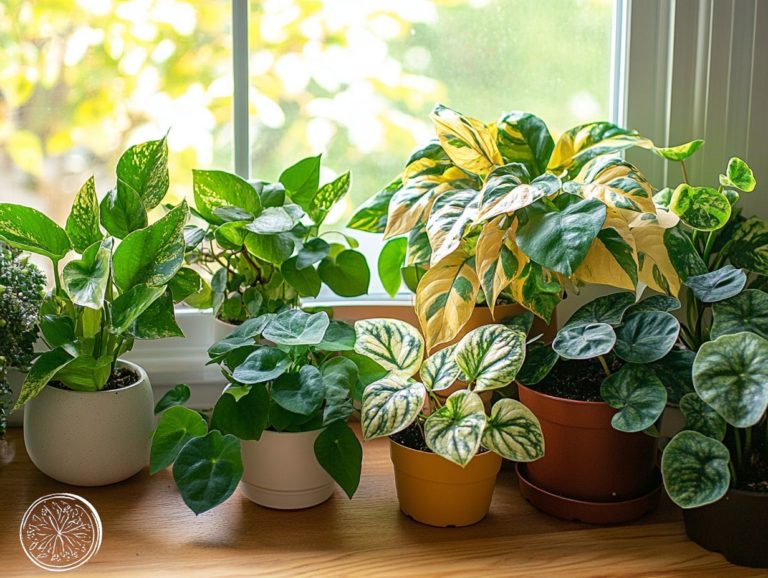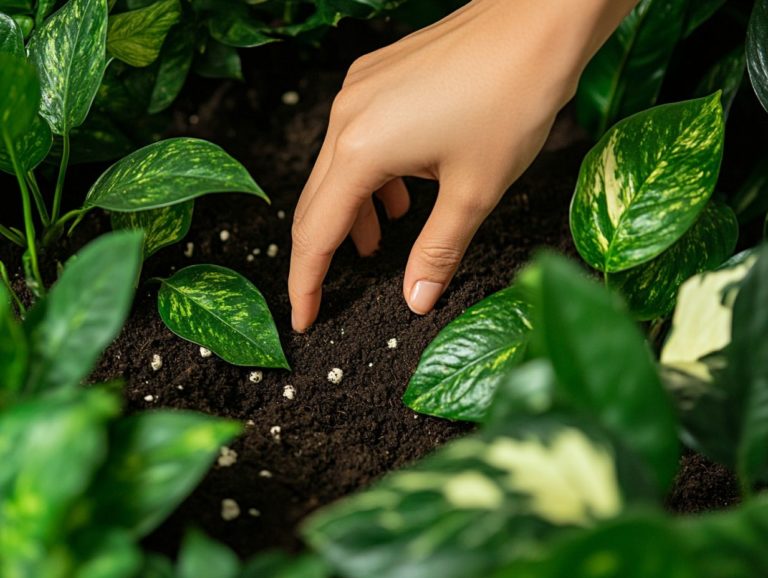Common Soil Issues Affecting Indoor Plants
Indoor plants and houseplants have the remarkable ability to bring life and energy to any space. Their vitality hinges on the quality of the soil in which they are rooted.
Spotting soil issues early can save your plants! A range of environmental factors and care practices can lead to common challenges. This article compares different soil options. It helps you choose the best medium for your indoor plants.
Contents
- Key Takeaways:
- Signs of Soil Issues in Indoor Plants
- Causes of Soil Issues in Indoor Plants
- Preventing Soil Issues in Indoor Plants
- Addressing Soil Issues in Indoor Plants
- Alternative Soil Options for Indoor Plants
- Frequently Asked Questions
- What are some common soil issues affecting indoor plants?
- How do nutrient deficiencies affect indoor plants?
- What can cause overwatering in indoor plants?
- What is compacted soil and how does it impact indoor plants?
- How do pH imbalances affect indoor plants?
- What can be done to prevent or address common soil issues affecting indoor plants?
Key Takeaways:
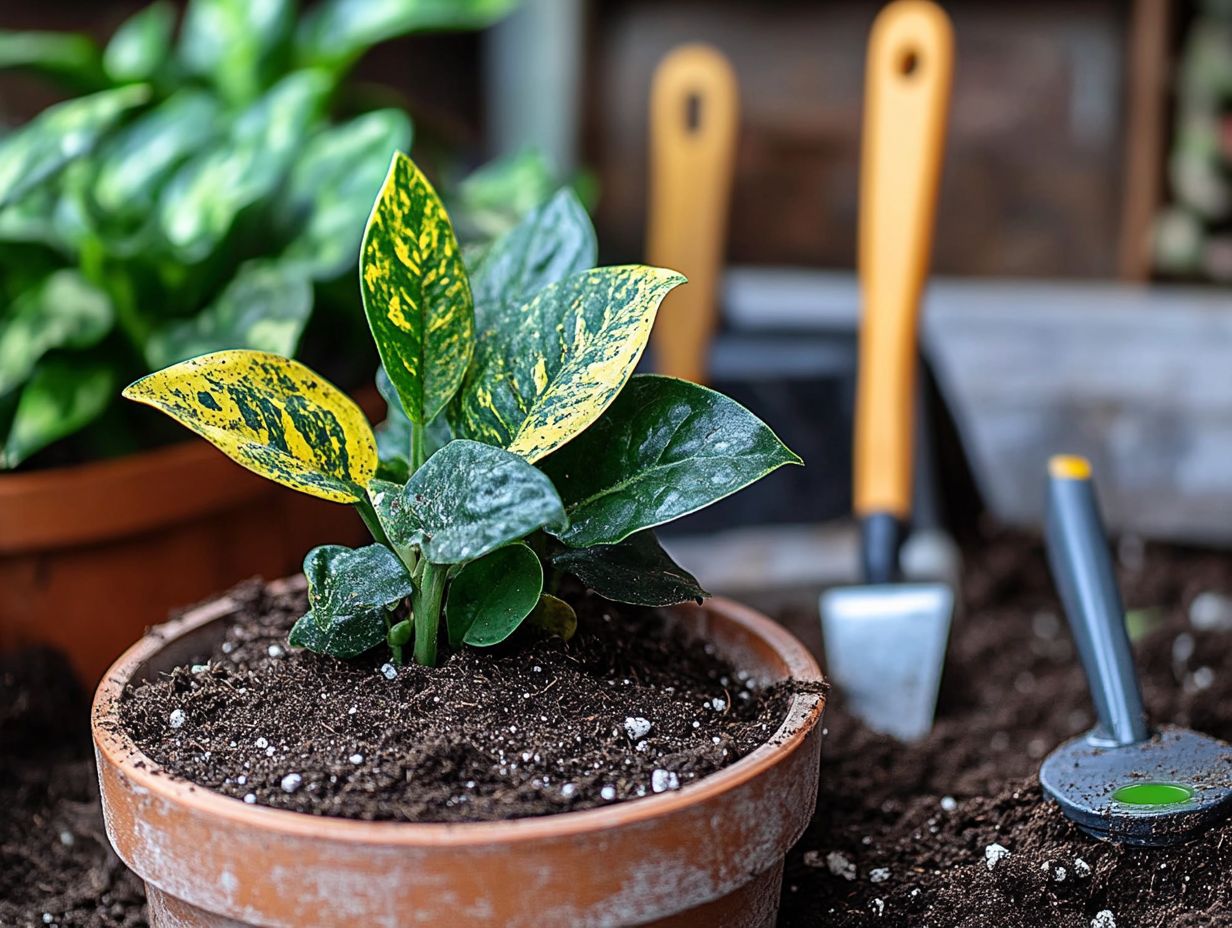
- Poor soil quality can lead to significant issues for indoor plants, affecting their growth and overall health.
- Signs of soil issues in indoor plants include wilted leaves, yellowing leaves, and stunted growth.
- Environmental factors and proper plant care are key contributors to soil issues, but regular maintenance and treatment can prevent and address them effectively.
Why Soil Quality is Important for Indoor Plants
Soil quality is essential for the health and vitality of your indoor plants. It directly impacts their growth, vigor, and overall well-being.
Poor soil can lead to issues like yellowing leaves, wilting, and root rot none of which are good for thriving indoor greenery. By choosing the right soil composition, you can ensure proper drainage and moisture retention.
High-quality soil also helps manage common pests and diseases, allowing your indoor plants to flourish. Recognizing the importance of soil quality enables you to adopt better care practices tailored to your houseplants unique needs.
Factors such as organic matter, pH levels (the acidity or alkalinity of the soil), and nutrient availability are crucial for good soil quality. Well-aerated soil allows roots to breathe and minimizes the risk of overwatering.
Incorporating compost can elevate nutrient levels, enhancing your plants resilience against pests and diseases. Amending soil with suitable materials ensures optimal drainage, which is critical to avoid waterlogged conditions that could lead to root rot.
Signs of Soil Issues in Indoor Plants
Identifying signs of soil issues in your indoor plants is crucial for ensuring their health and vitality. Symptoms such as yellowing leaves, leaf drop, and root rot can signal underlying soil problems that require your attention.
By recognizing these signs early, you can adjust your care routine, promoting the longevity and flourishing nature of your greenery.
Identifying Common Symptoms
Common symptoms of soil issues in your indoor plants appear as yellowing leaves, wilted foliage, or unexpected leaf drop. These signs indicate that your plant may be struggling.
They can significantly affect your plant’s health by pointing to problems like overwatering, nutrient deficiencies, or inadequate light. If you notice yellowing leaves, this may signal excessive moisture in the soil, leading to root rot and restricting nutrient uptake.
Wilted leaves often indicate an insufficient water supply or potential root damage. Unexpected leaf drop can hint at nutrient deficiencies, where elements like nitrogen, phosphorus, or potassium are lacking, causing stress to your plant’s health.
To tackle these issues, evaluate your watering practices, ensure proper drainage, and consider supplementing with fertilizers tailored to your plant’s specific nutrient needs. Reassessing the light conditions in which your plant thrives can also greatly enhance its recovery process.
Causes of Soil Issues in Indoor Plants
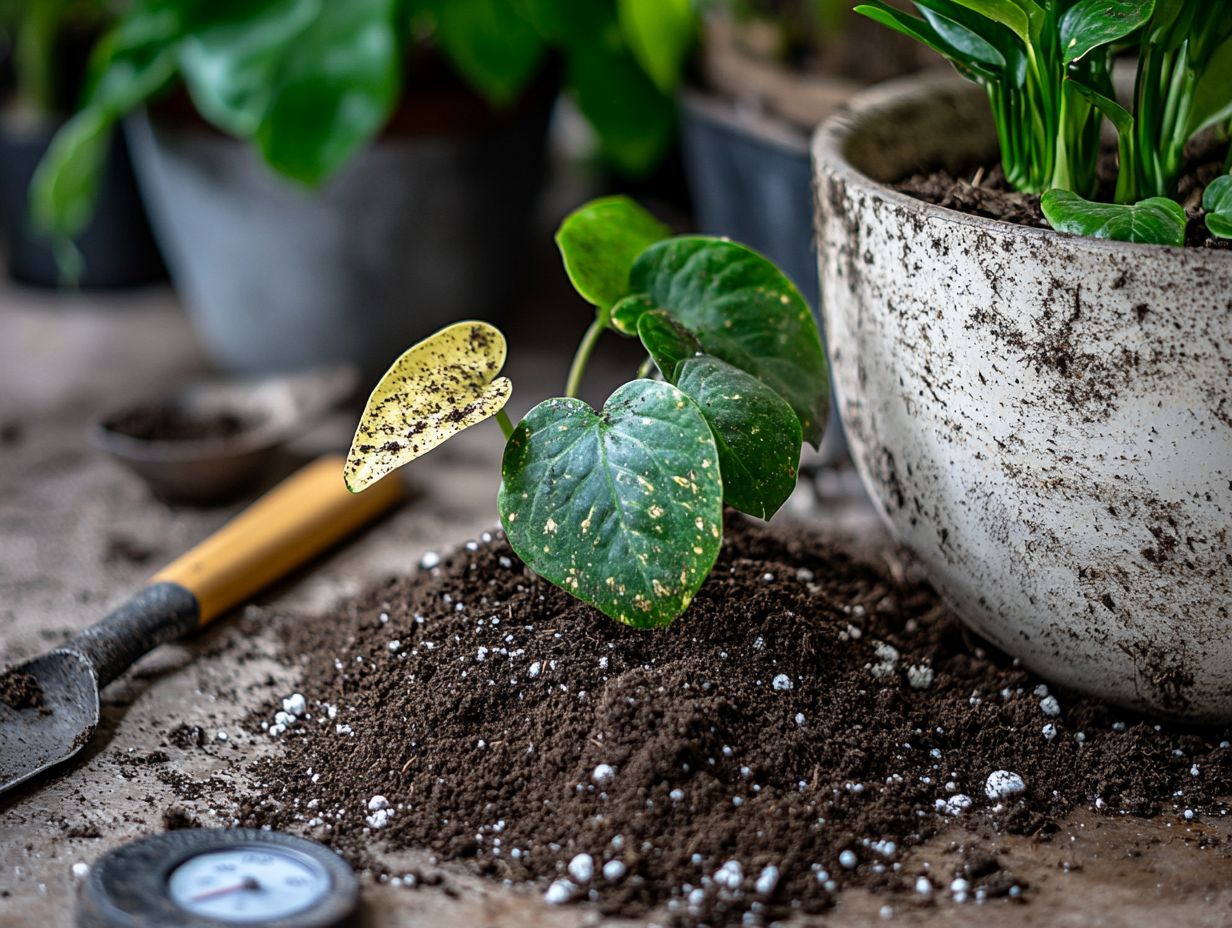
Understanding the causes of soil issues in your indoor plants is essential for maintaining their health. Factors such as overwatering, inadequate soil drainage, and environmental influences like humidity and temperature can harm your plants.
Moreover, root rot, a frequent problem associated with improper watering practices, often stems from these soil-related issues. Understanding soil pH for indoor plants highlights the necessity of consistent care and vigilant monitoring to keep your plants thriving.
Environmental Factors and Plant Care
Environmental factors are pivotal in your plant care journey. They significantly influence soil conditions and the overall health of your indoor plants. Humidity levels, temperature fluctuations, and air circulation directly impact soil moisture and growth.
By understanding how these variables interact, you can fine-tune your care practices to meet your indoor plants unique needs. To craft the perfect environment, aim to maintain optimal humidity levels between 40% and 60%.
You might consider using a humidifier or grouping your plants together to boost moisture in the air. Don t forget about air circulation; stagnant air can lead to mold and diseases. Rotating your plants periodically can ensure they receive balanced exposure.
Soil health thrives under these carefully managed conditions, as proper moisture and airflow foster healthy bacteria in the soil. By adopting these strategies and utilizing the top soil amendments for healthy indoor plants, you can cultivate a flourishing indoor garden!
Preventing Soil Issues in Indoor Plants
Preventing soil issues in your indoor plants is a proactive strategy that guarantees their long-term health and vitality. By concentrating on maintaining healthy soil through effective soil moisture management and ensuring adequate drainage, you can mitigate common plant problems.
Incorporating gardening tips specifically tailored to your plants can greatly diminish the likelihood of diseases and pest control challenges.
Tips for Maintaining Healthy Soil
Healthy soil is the secret ingredient for thriving indoor plants! Let s explore how to keep it in top shape. Regularly check soil moisture levels and ensure proper drainage to prevent issues like root rot and nutrient deficiency.
By pruning leaves and cleaning your plants, you can further enhance soil health. Incorporating organic matter, such as compost, enriches the soil with vital nutrients and improves its structure.
Watch pH levels, as this helps you understand nutrient availability. A balanced pH encourages beneficial bacteria, essential for breaking down and absorbing nutrients. Rotating plants within their pots not only gives them a fresh environment but also optimizes soil utilization.
Additionally, regularly aerating the soil through gentle tilling promotes oxygen circulation, allowing roots to breathe and flourish in their nutrient-rich habitat.
Addressing Soil Issues in Indoor Plants
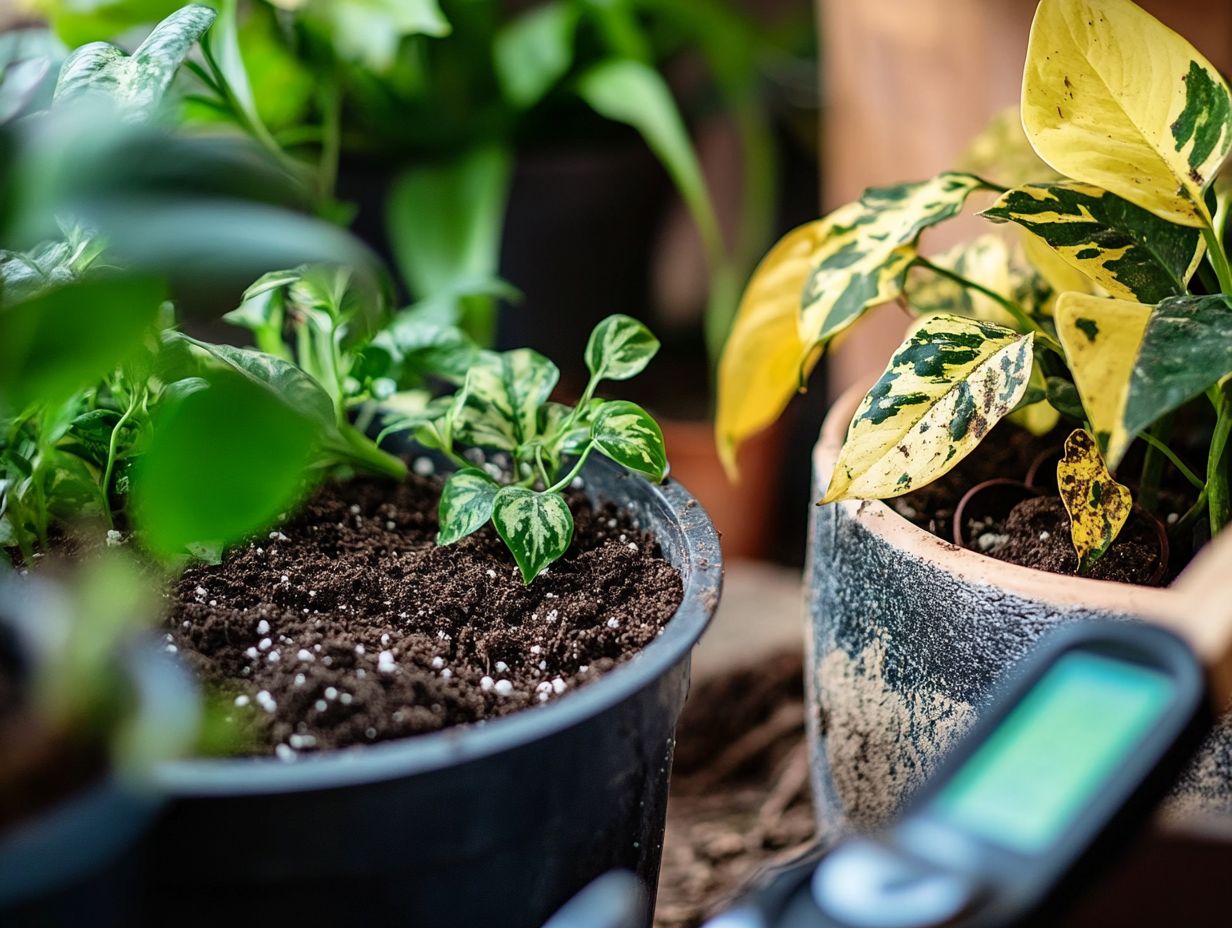
Addressing soil issues in your indoor plants needs quick action and specific treatments to thrive! Whether you re contending with root rot or nutrient deficiencies, understanding the underlying causes is essential.
A thoughtful combination of corrective measures like fine-tuning your watering schedule and improving soil quality can breathe new life into your struggling plants and restore their vitality.
Effective Treatment Methods
Effective treatment methods for soil issues are essential for restoring plant health. They also prevent recurring problems, such as root rot, which often requires repotting the affected plant into fresh soil to improve drainage.
Monitoring moisture levels is crucial. Overwatering can worsen root rot and create a vicious cycle of deterioration.
Pest infestations often need targeted control methods. Understanding these treatment methods gives you the power to tackle soil-related challenges efficiently.
Regular inspections can catch early signs of infestations. Implementing companion planting planting certain plants together to boost their natural defenses can promote healthier ecosystems in your garden.
Familiarizing yourself with the common symptoms of root rot and pests helps you identify issues quickly. Ultimately, a proactive approach combined with knowledgeable care practices ensures your plants thrive, minimizing the risk of recurring soil ailments.
Alternative Soil Options for Indoor Plants
Discovering alternative soil options can enhance your indoor plants growth and health dramatically. Different soil types, including specialized potting mixes and organic soil amendments, cater to the unique needs of various plants, ensuring optimal drainage and moisture retention.
Choosing the right soil today will set the stage for lush, vibrant plants tomorrow! Don’t wait transform your indoor garden now.
By selecting the right soil, you can effectively address common challenges like root rot and nutrient deficiencies, creating a robust foundation for your flourishing indoor greenery.
Comparing Different Types of Soil
Comparing the various types of soil is essential for selecting the optimal option for your indoor plants. Each type presents its own unique benefits and drawbacks.
Potting soil, organic soil, and an array of soil amendments differ in composition and suitability. These differences directly impact crucial factors like drainage, moisture retention, and nutrient availability.
For example, potting soil typically consists of a blend of peat moss, vermiculite, and perlite. This provides excellent drainage while retaining just the right amount of moisture making it perfect for most indoor plants.
On the other hand, organic soil, enriched with natural compost, enhances nutrient availability and supports a healthier ecosystem for your plants. However, it may retain too much moisture for those that prefer drier conditions.
Incorporating soil amendments like coconut coir or bark can adjust texture and moisture levels. This allows you to customize the soil to meet the specific needs of your plants.
By recognizing these attributes, you can create a thriving indoor garden that flourishes beautifully.
Frequently Asked Questions
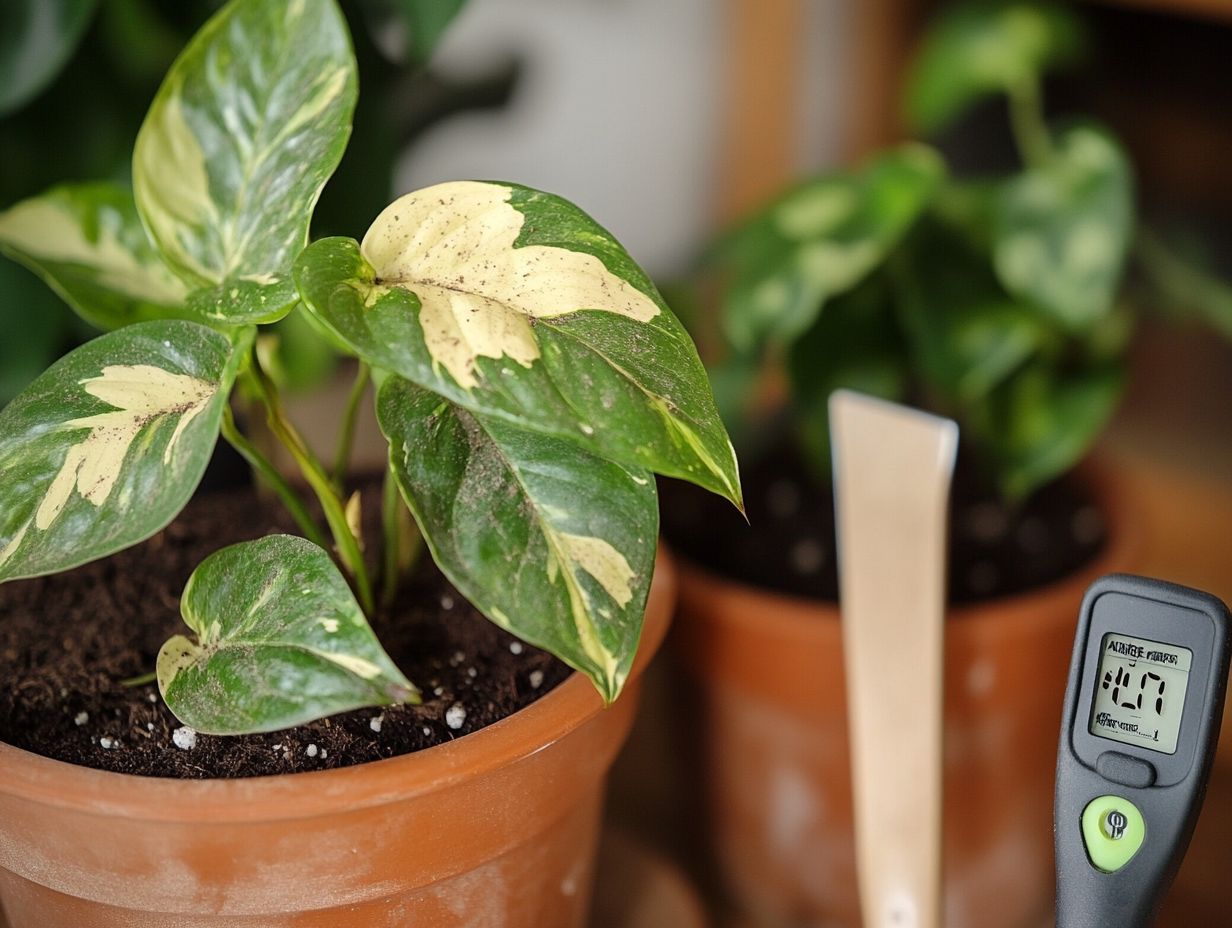
What are some common soil issues affecting indoor plants?
- Nutrient deficiencies
- Overwatering
- Compacted soil
- pH imbalances
- Pests or diseases
How do nutrient deficiencies affect indoor plants?
Nutrient deficiencies in soil can cause stunted growth, yellowing leaves, and reduced flowering or fruiting in indoor plants. This is because plants require a balance of essential nutrients to thrive.
What can cause overwatering in indoor plants?
Overwatering can be caused by using pots without proper drainage, watering too frequently, or not allowing the soil to dry out between waterings. This can lead to root rot and other problems for indoor plants.
What is compacted soil and how does it impact indoor plants?
Compacted soil is tightly packed and does not allow for proper air and water circulation. This can lead to poor root growth and nutrient uptake in indoor plants, causing them to wilt and suffer from various deficiencies.
How do pH imbalances affect indoor plants?
Indoor plants thrive in soil with a neutral to slightly acidic pH. If the pH is too high or too low, it can affect the plant’s ability to absorb nutrients and cause stunted growth or other health issues.
What can be done to prevent or address common soil issues affecting indoor plants?
Taking care of your indoor plants is easier than you think! Regularly check and adjust the pH of your soil to keep your plants thriving.
Use pots that drain well, and remember to water them properly. Don’t forget to fertilize your plants!
Watch out for pesky bugs and diseases that can harm your healthy soil.


